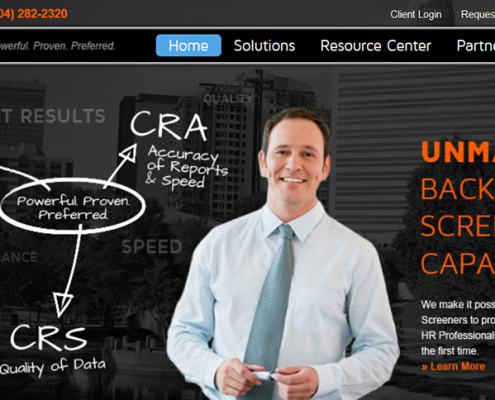What You Can Learn About Running Your Business from Bob Vila and ‘This Old House’
I grew up watching Bob Vila renovate and restore homes on This Old House. For those who haven’t seen the show, he would start with homes that were in terrible shape, work on them over the course of 3 or 4 (or more) episodes, and when the renovations were completed, they would be restored to their original glory.
Back then, I always wondered why he invested so much time and energy restoring old homes with so many problems when it would have been easier and just as profitable (or more) to just build something new. I don’t know Bob Vila personally, but clearly his life’s work was driven by more than just making money the easiest way possible.
My guess (and maybe my hope) is that his answer to the question, “Why restore old homes?” would be something like: “These homes were built to last. Restoring them to their original beauty does more than just making them habitable by someone today– it honors the blood, sweat and tears of the original master craftsmen that built it, as well as the work of the designers and architects that poured their heart and soul into creating it.”
I believe that in renovating and restoring those old houses, Bob Vila essentially became part of the succession plan of the craftsmen, architects and designers. He adopted their original vision for the property and then applied his own skills and expertise to enhance it, thereby becoming part of the team that created the end result, which is the beautiful home that exists today.
So what can business owners learn from Bob Vila and This Old House about Charlotte business planning and how to run their business?
The Foundation: Don’t Build Your Business In a Way That 50 Years From Now, It Will Need Major Reclamation to Be Viable
In other words, plan for the distant future, not just the short term. It is possible to build a business that will be sustainable over the long haul, but it requires smart planning and thinking beyond just today and tomorrow. The first step is to ask yourself the hard question, “Will my business really last 50 years from now?”
If your answer is yes, why do you think that? If no, why not?
It’s true that nobody truly knows what the next 50 years will bring unless they have a crystal ball, but there is a mindset to planning for your business’s sustainability over the long term. Asking that one question forces you to think strategically about:
- whether you have set things up to be flexible to adjust to changing market conditions
- whether you are actively seeking ways to innovate
- whether you are staying on top of new developments in your niche that will change the landscape in the future
Innovation that turns the current status quo on its head has become much more common, and that trend is going to continue. Are you looking out for the things that could render your business model or processes obsolete before they become mainstream and you’re no longer able to compete?
Whatever your future plans are for your business when you’re no longer running it– whether you retire or sell the business– if you’re not competitive or profitable, you either won’t be able to do what you want (it’s hard to sell a dying business or one based on a soon-to-be-outmoded business model), or you won’t get the value from it you think and will have less to live on yourself or to pass on to your children or successors.
For that reason alone, you have to think ahead and stay on top of current industry trends and new developments if you want your business to last into the future.
Future Aside, What Can You Do to Increase the Value of Your Business NOW?
The real value of your business at the end of the 50th year goes beyond some executable financial strategy between your attorney, CPA, planner, business broker, or banker. The real value is created now, by doing some of the things that Bob Vila did and appreciated in the homes he restored.
1: Be a Master Craftsman: Excel and Take Pride in What You Do
When people look at what you do, they should see, feel and know that you take pride in what you do… that you are driven by a higher purpose that is more than just making a living, but is instead a calling, and that you care more about serving and helping others than about yourself.
Doing whatever it is you do in a way that honors God, your family, your history and your God-given gifts and talents means you will reap rewards that go far beyond your bank account, and that attitude will drive value forever.
2: Be an Amazing Architect: Plan Wisely, Mind the Details and Think Strategically
Focus on the integrity of the foundation of your business– build a team of people who share your vision, care about the details and deliver above and beyond on the promises your business makes to your customers.
Make sure you and your team have up-to-date technical skills and expertise, so your clients can rely on you as their go-to source for the latest solutions to their problems– a trusted resource in an ever-changing world is irreplaceable.
Listen carefully and really understand what your customers need (which is sometimes different from what they ask for), and then apply your knowledge to solve their problems, even the ones they didn’t know they had or didn’t see coming. If you are the firm that really understands your clients’ needs, they will never go anywhere else for help with what you do.
3: Be a Smart Designer: Think Holistically, Update Selectively
Bob does not use old technology like electrical wiring, plumbing and support structures when better choices are available– he updates old homes while respecting the original design.
In your business, you can find ways to incorporate new voices on your team and new technologies into your processes to add value for your customers, while still preserving your core value proposition and respecting the knowledge you have gained from the past experiences that have made your company what it is today.
There are times you may need to eliminate or edit your products/services and your team, but approach that decision thoughtfully and carefully consider whether you might be able to grow through addition rather than subtraction before you act.
You may be surprised at the things you can find a way to harmoniously incorporate, and at the growth that can result.
4: Find and Savor Your Joy
In all the years I have watched Bob Vila, I don’t think I have ever seen him unhappy. He always seems to be excited to be where he is at the moment, enjoying the project as it unfolds.
He doesn’t show impatience or frustration; instead he seems grateful that he gets to do what he loves and spend time with others who care about the project as much as he does.
There is something to be said for being content in the knowledge that whatever you are doing, you are doing for a reason, and being fully present in and enjoying the current moment.
Make the most of the present: share an encouraging word or a bit of wisdom with someone; be a mentor, a steward or a friend. Others did that for you; take the time to pay it forward for someone else.
I am grateful to Bob Vila and This Old House, for the many valuable lessons I learned from watching the show that had nothing to do with replacing hardwood floors and hanging cabinets. I hope you find value in these lessons and can use them to help you plan your business so that it lasts as long or longer than an old Victorian home.
If you would like to talk more about Charlotte business planning and how to strategically position your company for a long and successful future, email me. I will be happy to help any way I can.
Shane Snively is a Charlotte Business Planning Specialist who helps business owners set up their businesses for success now and in the future. Learn more about Shane.






